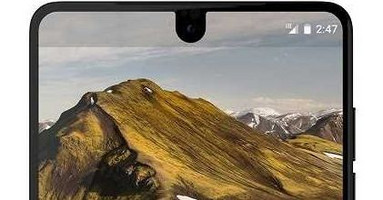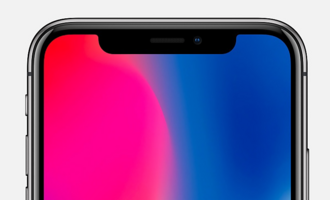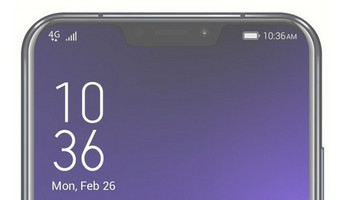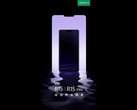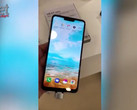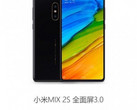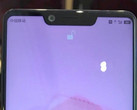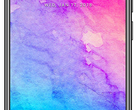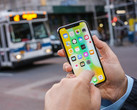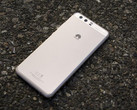Opinion: The iPhone X notch is not great design, so why copy it?
If there is one thing that MWC 2018 will be remembered for, it is not the launch of the Galaxy S9 and S9+, which look very much like their predecessors. It will be for the sheer number of blatant copycat Android smartphones that have ripped off the iPhone X’s notch (to be hereafter referred to as ‘The Notch”, as opposed to the Essential PH-1’s tiny camera-sized notch). Asus, Leagoo, Oukitel, Blackview — all pointlessly cribbed The Notch. Although a device called the LG G7 turned up at MWC with a Notch, they get a reprieve, as it has reportedly ditched its Notch copy for an all-new design. Unfortunately, however, the LG G7’s place seems to be taken by the just-teased Oppo R15 (and its design twin by default, the OnePlus 6). Thus, the list of brain-dead imitators swells. Why do I say “brain-dead”? Because the iPhone X notch is a design compromise, not a design breakthrough.
The iPhone X Notch was controversial from its introduction not so much because of the Face ID technology it houses, but because of the way that it intrudes into the UI. Speaking to the Herald Sun, Sony’s head of design, Kaz Tajima, recently criticized the notch from this perspective; when asked why Sony hadn’t followed Apple’s lead on the notch as so many others have, Tajima said, “Notching the display always affects the user interface. We try to keep a square user interface as much as possible [because] we try to respect the content as much as possible.”
Other critics of The Notch have made the same argument: It might be distinctive (potentially helping to set it apart from other would-be full-screen devices reaching the market), but it comes at a cost to the user experience. The irony of this is that Apple, perhaps more than most companies, has focused on delivering uncompromised user experiences. So, including a design element like the notch to help make it more distinct (likely necessitated by the removal of its previously defining feature, the iconic Home button), is quite un-Apple-like. The saving grace for The Notch is the technology that it contains, which is what Apple is actually calling attention to in its decision to encroach upon the content. Still, the Notch is a decision made even more ironic by the fact that Apple has historically boasted of making technology fade to the background in the interest of advancing the user experience — the iPhone X is a complete reversal of this formula.
Part of what contributes to my decidedly negative take on the copycat designs we’ve seen of late is that fact that the iPhone X’s emulators do so with literally no excuse beyond imitation. The official Apple name for The Notch is the “True Depth Camera System.” It is a piece of hardware central to the device’s Face ID biometric authentication system. It contains a proximity sensor, infrared emitter capable of projecting 30,000 invisible dots on a user’s face, infrared camera, flood illuminator, ambient light sensor, 7MP camera, and a speaker and microphone. As you can see from the image above, there is a lot of tech packed into The Notch. This is quite different to the Notch-sporting devices that invaded MWC en masse, which simply include a front-facing camera, speaker and the usual sensors.
From an engineering perspective, there is almost no reason whatsoever for any of the copycat smartphones to have a Notch rather than simply a notch, such as the Essential PH-1 or the Xiaomi Mi Mix 2S, as none on show at MWC incorporate a 3D facial recognition system. Most, if not all, include a rear fingerprint sensor on their devices and don’t include anything special from a technological perspective in their notches. These companies have simply copied the notch for the sake of having a Notch, just like Apple. Worse, Asus, while at the same time as it shamelessly copied the iPhone X notch, also managed to try ridicule Apple by calling it the “Fruit Company.”
Thankfully, the designers at Xiaomi and Vivo have demonstrated that they possess some imagination. Even if there is an overall industry trend towards full-screen devices, their designers have shown some originality. Xiaomi’s Mi Mix 2S takes its own approach to the front-facing camera placement dilemma caused by the full-screen display trend, placing it in a small corner of the device. Meanwhile, Vivo’s incredible APEX FullView concept phone features a retractable pop-up front-facing camera, with its cutting-edge design proving that, with just a little imagination, smartphone makers don’t need to shadow every step that Apple makes — particularly the dubious ones.
It might make sense to copy design elements of a device that advances the smartphone experience — Apple has perhaps done this better than most companies, often “reinventing” products in a way that improve upon the user experience. What makes the Notch phenomenon on show at MWC particularly egregious is not the complete disregard for intellectual property, but the fact that in the rush to say “me too,” so many smartphone makers have copied what is arguably a retrograde design choice forced on Apple by the apparent need to replace one distinctive feature with another — not because it is advancing the user experience.




